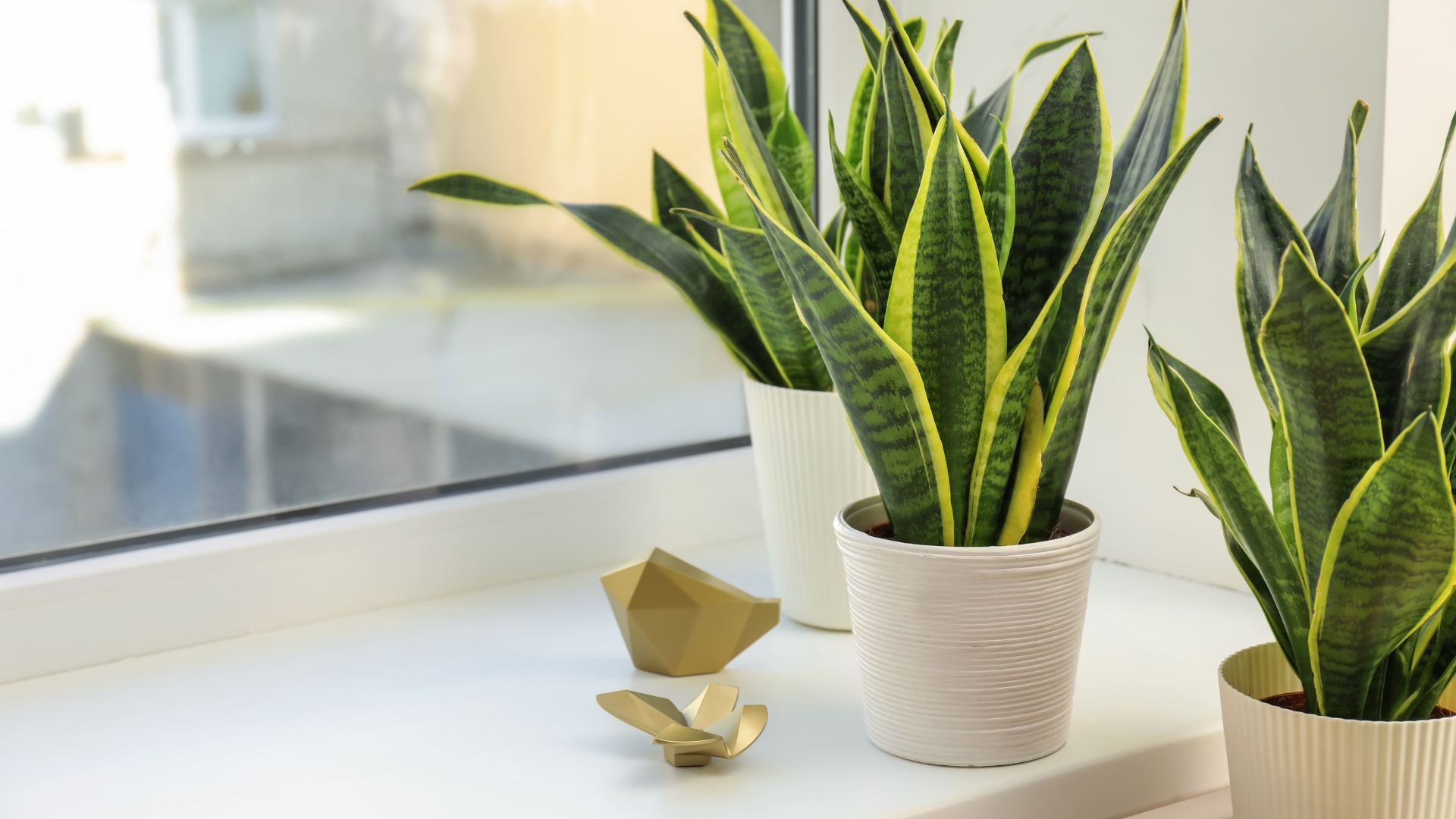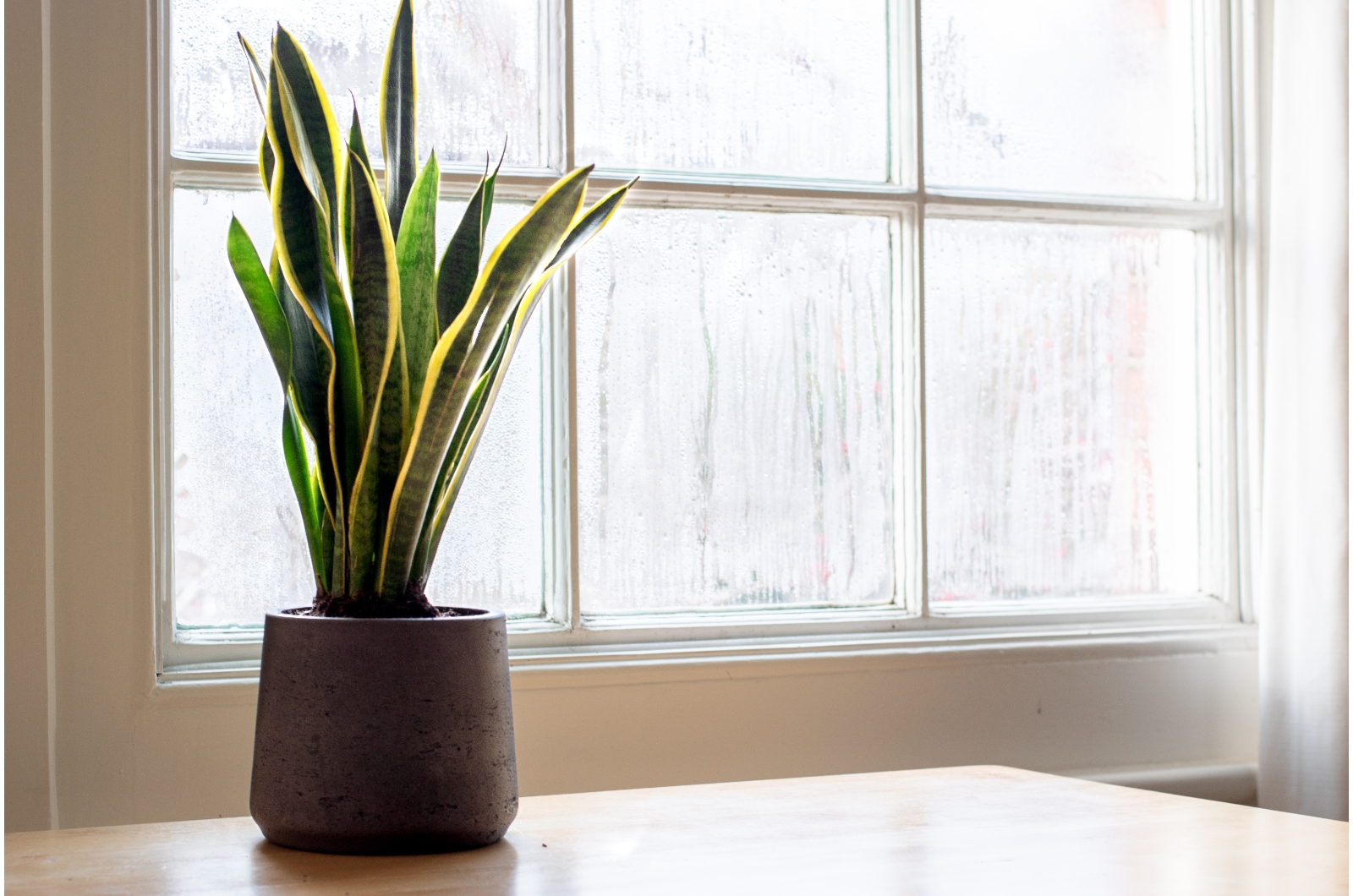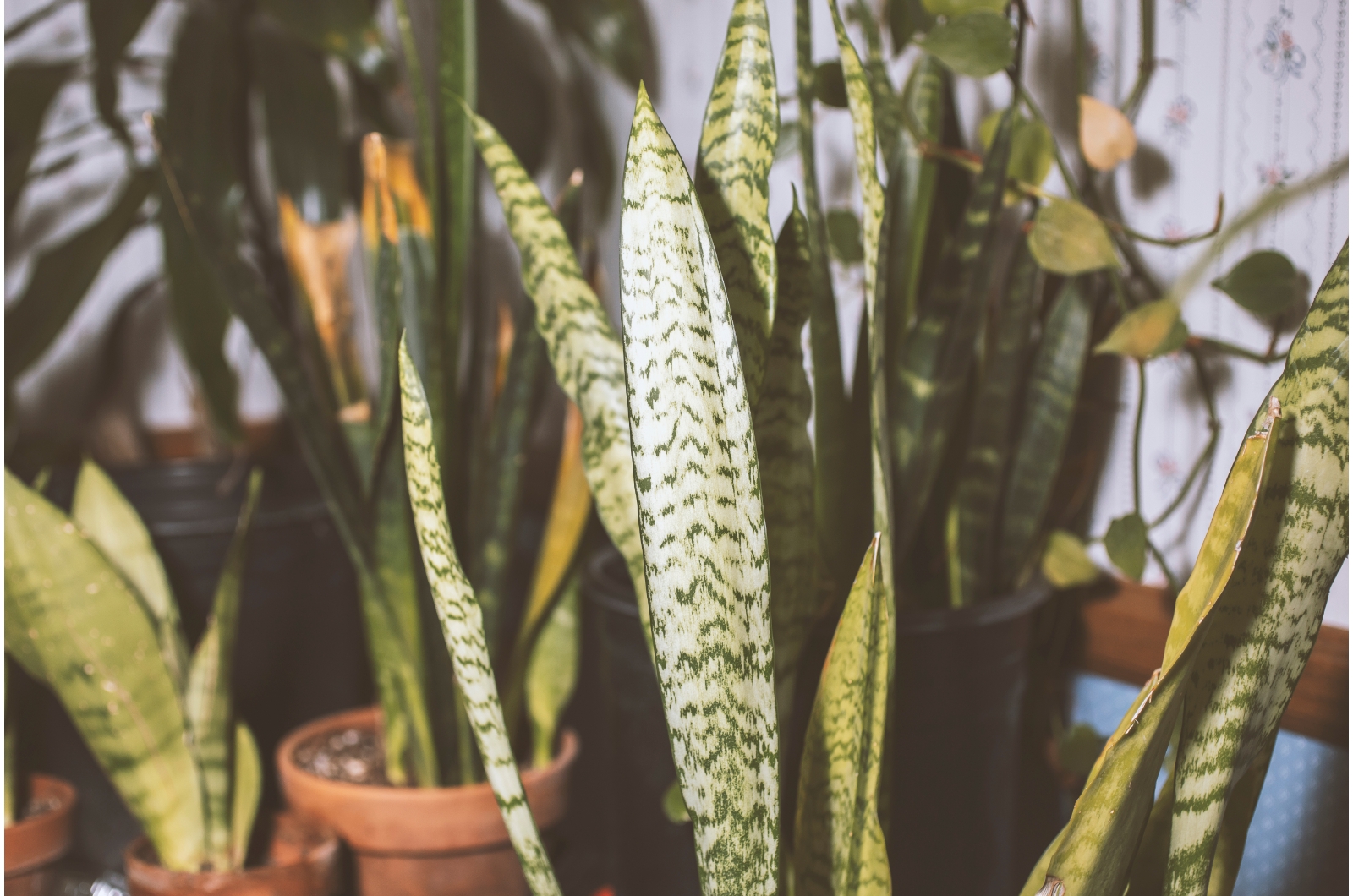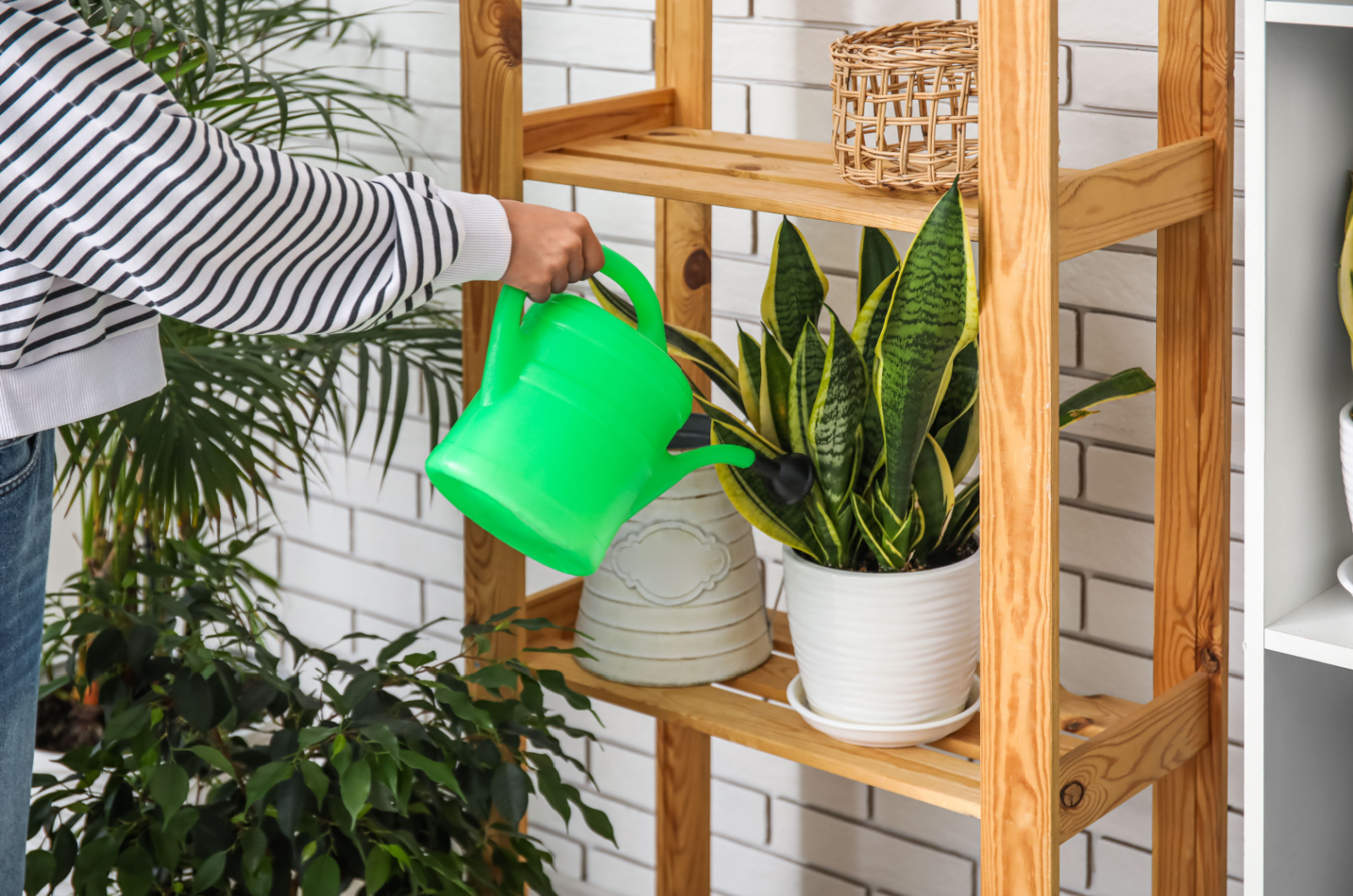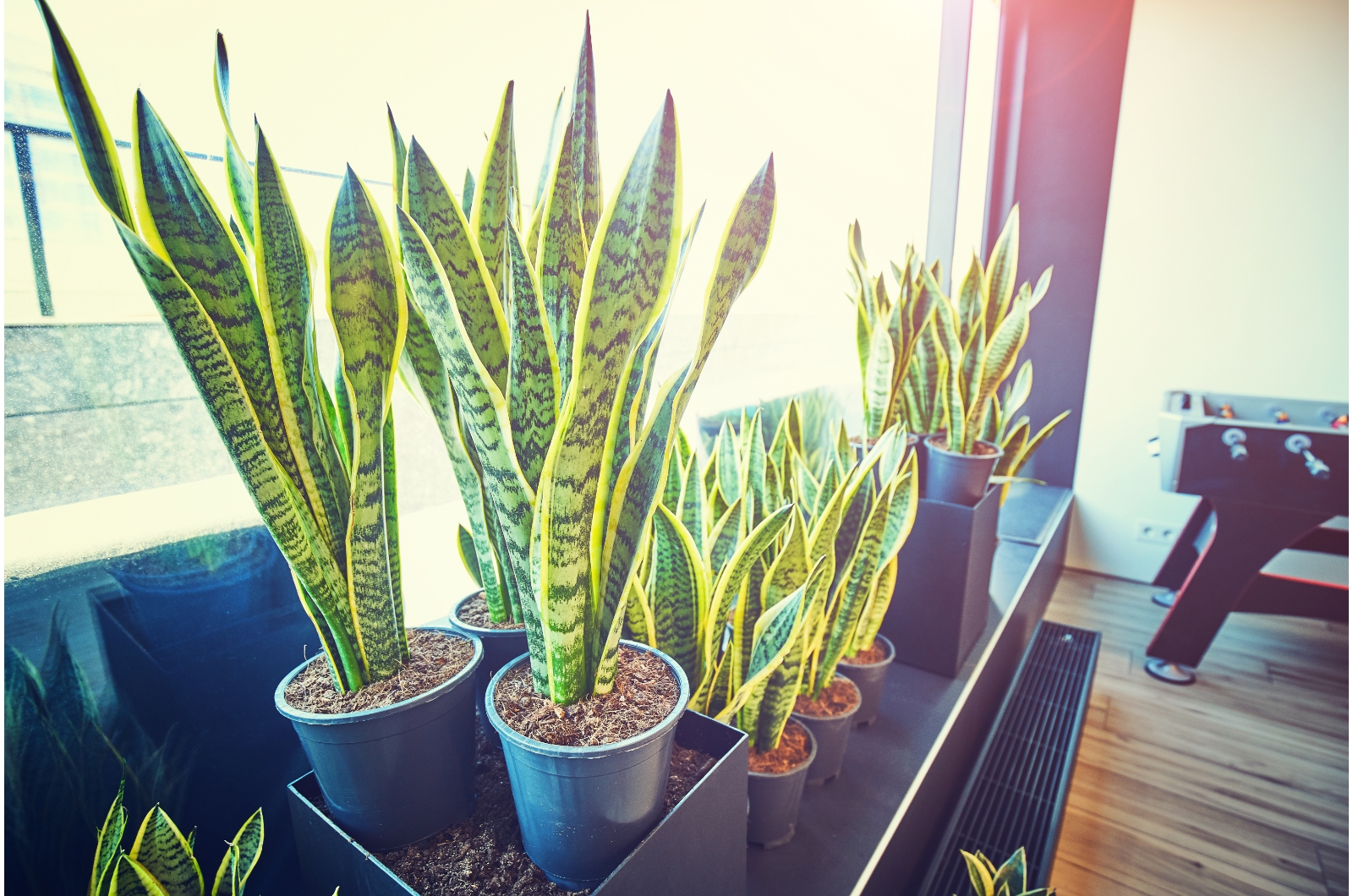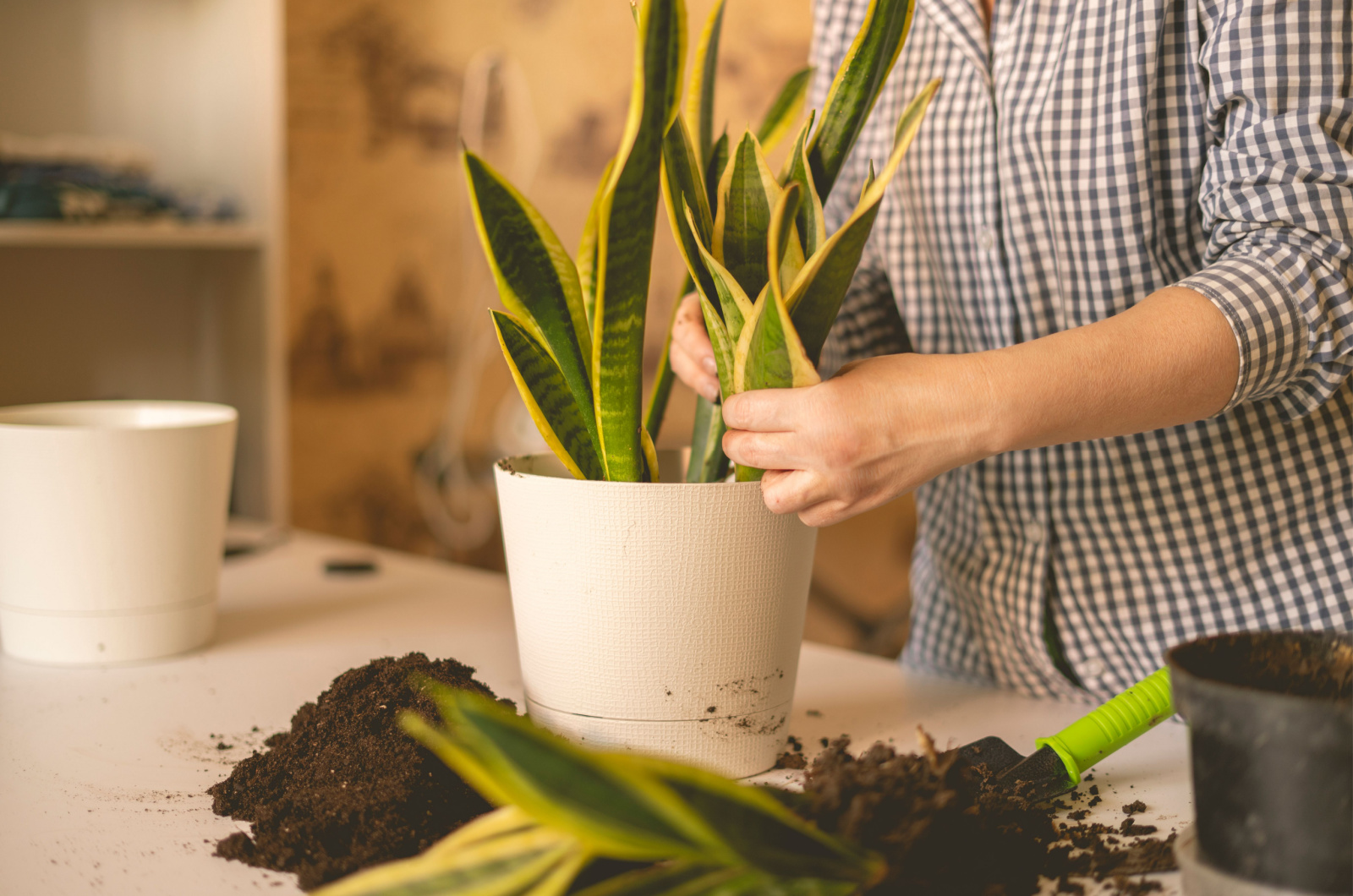If you ask experienced gardeners for a plant recommendation, I’m sure the most common answer will be a snake plant.
These plants are nearly indestructible and there aren’t many things that can go wrong with them. However, if your previous plants haven’t survived and you’re worried you’ll mess up with this one, you’re in the right place.
In this article, I’ll show you some expert tips for snake plant care to keep these succulents happy and healthy for many years to come!
Let’s get started!
1. Ensure Bright Indirect Light
Well, light is an essential factor in the development of snake plants and all plants in general. So, after you bring the plant to your home, the first thing you need to do is find it a spot.
Sunny windowsills, dark corners, and office desks all seem like great locations for plants. Well, the good thing about the snake plant is that it isn’t as fussy over light conditions as other common plants.
Still, there are some things about Dracaenas you need to be aware of. The first one is that these plants can’t withstand direct sunlight. So, south-facing windows aren’t a good choice for snake plants and too much sun exposure could kill them.
Bright indirect light is key to healthy snake plant growth, so a spot a few feet from a sunny window is ideal.
Since I’ve said that the snake plant isn’t fussy over light conditions, I’m sure you expect some explanation. Well, this plant does not tolerate direct light but that’s not the case with low light.
Yes, it will be the happiest in bright indirect light, but it will grow just fine in darker parts of your home. In this case, the snake plant growth rate may decrease a little bit but the plant will still look amazing.
2. Avoid Too Hot And Dry Rooms
Another thing you should check before deciding on the spot for your snake plant is the temperature and humidity of the room.
The temperature tolerance of snake plants may range from variety to variety, but one thing they all have in common is intolerance to high temperatures.
If you put your snake plant in a hot room with too much sunlight, it will quickly display yellowing.
A temperature range of 65-75 degrees Fahrenheit is ideal for Dracaenas and will encourage healthy growth.
When it comes to humidity, these succulents can tolerate moderate levels. It’s essential to keep your snake plants away from drafts.
If the humidity in your home is higher, don’t worry, your snake plants will enjoy it because they’re actually native to tropical regions.
3. Do Not Overwater
If you don’t spend a lot of time in your home or you travel often, this plant is perfect for you. It doesn’t need a lot of water to display healthy growth.
Even if you forget to water your snake plant from time to time, it will still grow and will be back on track as soon as you grab your watering can and irrigate the soil.
But there’s one more serious problem when it comes to snake plants and watering schedules; this is a succulent plant, which means it is sensitive to overwatering.
Adding water too frequently is a common snake plant care mistake and can have detrimental consequences.
Your prized Dracaena could quickly end up with root rot disease and display water lesions on the leaves, followed by yellowing, browning, and wilting.
A rule of thumb is to irrigate these houseplants once their growing substrate dries out entirely. If all the growing conditions are correct, this will happen once a week during warmer months and twice a month when the temperatures drop.
But don’t panic if you accidentally overwater your snake plant. If you react on time, you can still save your Dracaena. Simply take it out of its planter, inspect the roots, and allow the soil to dry well.
4. Use Planters with Good Drainage
Watering issues can occur in your snake plant due to many reasons, not just frequent watering.
Decorative cache pots may not be the best choice no matter how good they look. Planters for snake plants must be porous and contain drainage holes in the bottom.
The roots could quickly rot if they’re sitting in standing water for long periods of time. The planter holes will allow all the excess water to drain from the snake plant soil.
5. Repot Your Snake Plant Every Few Years
If you ensure all the growing conditions and water your snake plants correctly, they’ll display plenty of new growth.
At some point, the planter will become too small and your snake plant will need repotting. Your Dracaenas will most likely need a few years to overgrow their planters, so this task isn’t on your regular to-do list.
However, once the time for repotting arrives, all you need to do is take your snake plant out of its planter, loosen the soil around the roots, and put the plant in a fresh growing substrate.
Don’t opt for larger containers; select ones that are approximately 2 inches larger than the current one and your snake plant will continue to grow healthily.
That’s it! If you’re worried about maintaining your snake plant, simply follow our guidelines and enjoy watching your plant thrive!

